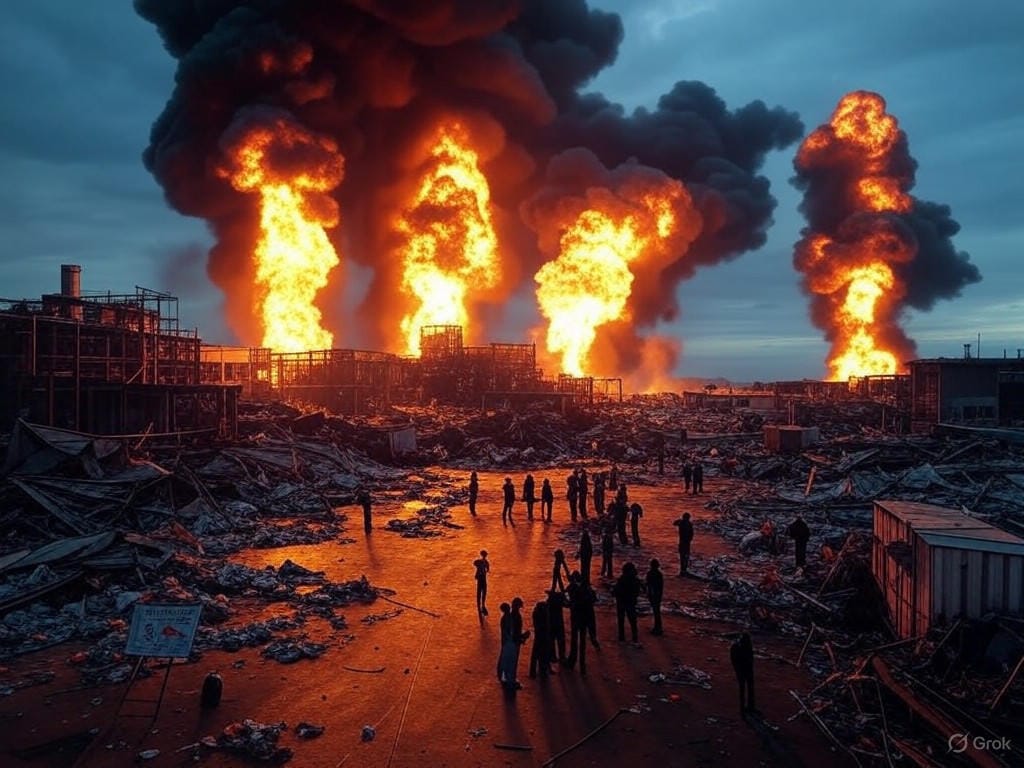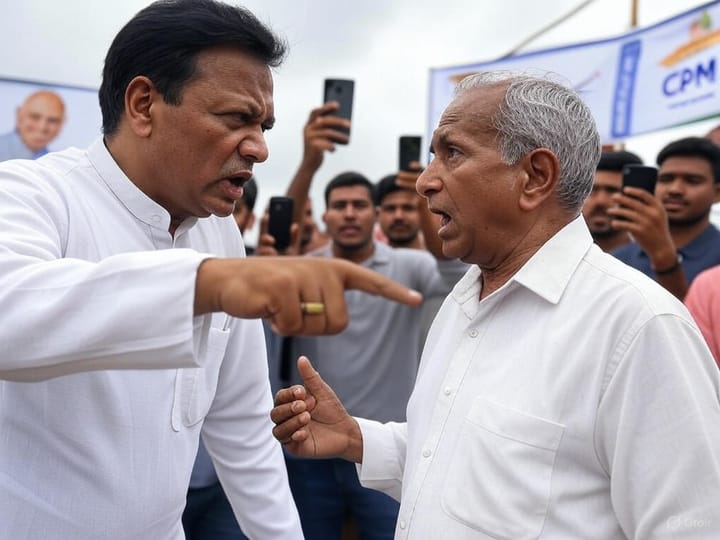Catastrophic Blast at Telangana Pharma Plant Kills 36, Exposes Industrial Safety Failures

A devastating explosion followed by a raging fire tore through Sigachi Industries’ pharmaceutical manufacturing plant in Sangareddy, Telangana, today, claiming at least 36 lives and leaving dozens injured in one of the deadliest industrial accidents in the region’s recent history. The horrifying incident, centered in the plant’s spray-dryer unit, has reignited fierce debates over India’s industrial safety standards and regulatory oversight, as families mourn and authorities scramble to identify victims through DNA testing.
The blast occurred at approximately 11:30 AM in the spray-dryer unit, a critical component of the plant used to produce pharmaceutical excipients. According to preliminary reports from the Telangana Fire Services, a suspected chemical leak or pressure build-up in the unit triggered the explosion, unleashing a fireball that engulfed the facility within minutes. Workers on the production floor had little chance to escape as the flames spread rapidly, fueled by volatile chemicals stored on-site. Eyewitnesses described scenes of chaos, with thick black smoke billowing into the sky, visible from kilometers away, and screams echoing from within the plant as trapped workers fought for their lives.
“Everything happened so fast. There was a loud bang, and then fire was everywhere. I saw people running, some on fire, falling to the ground,” recounted Ravi Kumar, a contract worker who narrowly escaped with severe burns. Kumar is among the 42 injured currently receiving treatment at hospitals in Sangareddy and Hyderabad, many in critical condition with burns covering over 60% of their bodies.
The death toll, confirmed at 36 as of late evening, is feared to rise as rescue operations continue into the night. Telangana’s disaster response teams, alongside the National Disaster Response Force (NDRF), have been deployed to comb through the charred remains of the facility. Firefighters battled the inferno for over six hours before bringing it under control, hampered by the risk of secondary explosions from chemical residues. “This is a complex operation. We are prioritizing the search for survivors, but the structural damage and hazardous materials make it challenging,” said a senior NDRF official on-site.
The scale of the tragedy has necessitated extraordinary measures for victim identification. Many bodies were burned beyond recognition, rendering traditional identification methods impossible. Telangana health authorities have initiated DNA profiling, collecting samples from relatives to match with the deceased. “It’s a painful process for the families, but it’s the only way to provide closure,” said Dr. Anil Reddy, a forensic expert overseeing the effort at Gandhi Hospital in Hyderabad. Families gathered outside the hospital and plant gates, clutching photographs of loved ones, their grief compounded by the agonizing wait for confirmation.
Initial statements from officials point to potential lapses in safety protocols as a contributing factor. Telangana Industries Minister K.T. Rama Rao expressed deep condolences and assured a thorough investigation. “This is an unacceptable loss of life. We will leave no stone unturned to determine the cause and hold those responsible accountable,” he said during a press conference. The state government has announced an ex gratia payment of ₹10 lakh for the kin of each deceased worker and ₹2 lakh for the injured, alongside free medical treatment for survivors.
Sigachi Industries, a leading manufacturer of microcrystalline cellulose used in pharmaceutical formulations, issued a statement late in the evening acknowledging the tragedy. “We are devastated by the loss of our colleagues and are cooperating fully with authorities to understand what led to this catastrophic incident. As a precautionary measure, we are shutting down production at the Sangareddy facility for the next 90 days to conduct a comprehensive safety audit,” the statement read. The company also pledged support for affected families, though specifics remain unclear.
The 90-day shutdown, while a necessary step, raises concerns about the livelihoods of hundreds of workers dependent on the plant. Local trade unions have already begun demanding long-term compensation and job security for those impacted. “This isn’t just about one accident. It’s about a system that fails to protect workers every day,” said M. Venkatesh, a union leader representing industrial workers in Sangareddy.
Today’s disaster at Sigachi Industries is a horrifying echo of past industrial tragedies in India, where lax safety regulations and inadequate enforcement have repeatedly led to preventable loss of life. The country’s industrial safety record remains dismal, with thousands of workplace accidents reported annually. According to the National Crime Records Bureau (NCRB), over 6,000 deaths were linked to industrial mishaps between 2018 and 2022, with chemical and pharmaceutical plants often at the forefront due to the handling of hazardous materials. Just last year, a similar explosion at a chemical factory in Andhra Pradesh killed 18 workers, with investigations revealing outdated equipment and ignored safety warnings as key causes.
Regulatory oversight in India’s industrial sector has long been criticized as reactive rather than preventive. The Factories Act of 1948, which governs workplace safety, is often flouted, with inspections either infrequent or compromised by corruption. In Telangana, home to one of India’s largest pharmaceutical hubs, the rapid expansion of manufacturing units has outpaced the state’s capacity to enforce compliance. “We have guidelines, but implementation is the problem. Many companies cut corners to save costs, and workers pay the ultimate price,” said Dr. Priya Sharma, an occupational safety expert based in Hyderabad.
The Sigachi Industries blast has already sparked calls for stricter regulations and accountability. Activists and opposition leaders are pressing for a national inquiry into industrial safety practices, particularly in high-risk sectors like pharmaceuticals. “How many more lives must be lost before we act? The government and corporations must prioritize safety over profits,” tweeted Priyanka Gandhi Vadra, Congress general secretary, in response to the tragedy.
Environmental concerns also loom large in the aftermath of the explosion. The fire released toxic fumes into the air, prompting authorities to issue advisories for nearby residents to stay indoors and wear masks. Environmentalists warn that chemical runoff from the plant could contaminate local water sources, posing a long-term health risk to communities in Sangareddy. “This isn’t just a human tragedy; it’s an ecological one. We need immediate containment and transparency about the chemicals involved,” said activist Sunita Narain during a television interview.
As night falls over Sangareddy, the smoldering ruins of Sigachi Industries stand as a grim reminder of the cost of negligence. Families huddle in makeshift shelters near the plant, clinging to fading hope as rescue teams work tirelessly. For the 36 confirmed dead, there will be no tomorrow, but their loss must serve as a wake-up call for a nation too often numbed by such disasters. The coming days will test the resolve of both the government and Sigachi Industries to deliver justice, not just through compensation, but through systemic change that ensures no worker steps into a factory fearing for their life.
The investigation into the spray-dryer unit explosion will likely uncover uncomfortable truths about safety lapses, maintenance failures, or human error. But beyond the technicalities lies a deeper question: how many more echoes of tragedy must India endure before safety becomes non-negotiable? For now, Sangareddy mourns, and a nation watches, waiting for answers that may never fully heal the wounds of June 30, 2025.
Note: This article has been compiled based on initial reports and official statements. Further updates on the investigation, casualty figures, and environmental impact will be provided as information becomes available.





Comments ()